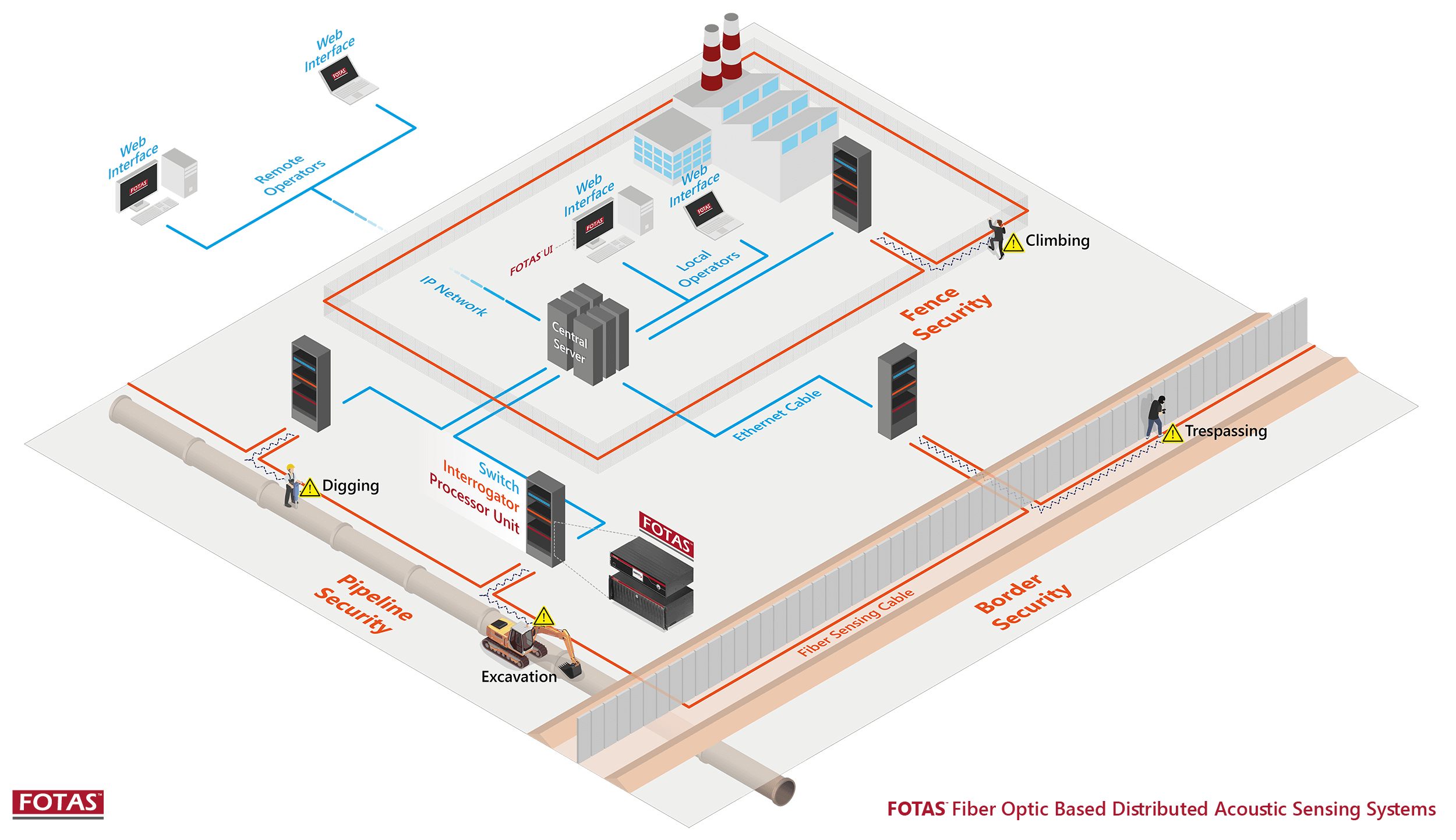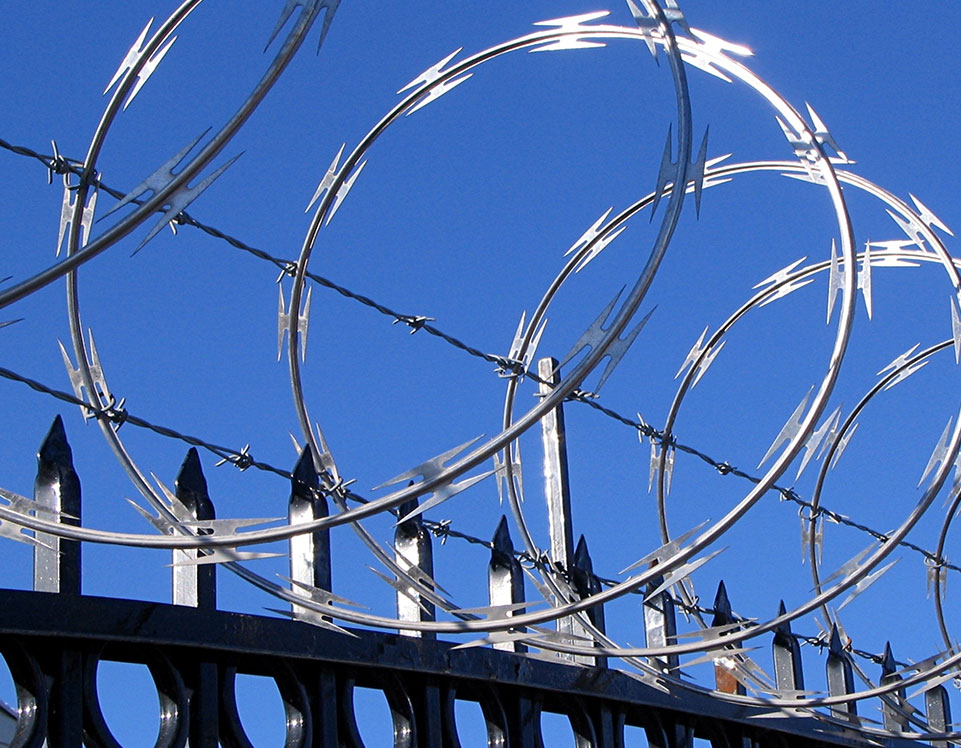How Fiber Security Helps Prevent Intrusions and Boosts Monitoring
Wiki Article
Why Fiber Optic Protection Systems Are the Future of Security
The change to fiber optic safety systems marks a considerable advancement in the realm of defense, driven by their extraordinary data transmission abilities and durability to outside interferences. As the landscape of safety advances alongside emerging modern technologies such as AI and IoT, the possibility for fiber optics to boost and redefine safety frameworks comes to be progressively apparent.Advantages of Fiber Optic Solutions
Among the primary benefits of fiber optic systems is their exceptional bandwidth capacity, which assists in the transmission of huge volumes of data over cross countries without substantial loss. This particular is especially valuable for safety applications that require the constant monitoring and transfer of high-definition video feeds, sensor data, and other critical information. Fiber optics can suit the growing needs of modern-day safety systems, ensuring that data stays undamaged and trustworthy.Furthermore, fiber optic cords are much less prone to electro-magnetic disturbance, which can be a substantial problem in settings with different electronic gadgets. This resistance enhances the integrity of the information being sent, consequently decreasing the danger of data violations or system failures. Fiber optic systems are naturally extra protected than traditional copper wires, as touching right into a fiber optic line without detection is exceptionally challenging.
The toughness of fiber optic cable televisions likewise adds to their charm. They are immune to ecological aspects such as wetness and temperature changes, reducing maintenance expenses and enhancing system long life. On the whole, these advantages setting fiber optic systems as a durable and efficient choice for modern-day safety and security facilities, ensuring trustworthy and safe and secure information transmission.
Enhanced Information Transmission Rate

The capacity to send huge quantities of data swiftly assists in the seamless integration of high-def video clip feeds and advanced analytics. Protection systems can now process and analyze details in real-time, enhancing reaction times and situational awareness. Furthermore, fiber optic connections support longer transmission ranges without degradation of signal quality, making them optimal for expansive safety and security networks.
The raised speed of fiber optic systems not just enhances the effectiveness of safety operations however likewise minimizes latency. This is specifically important in critical scenarios where timely decision-making can stop safety violations or reduce possible risks. As organizations remain to focus on safety and efficiency, the need for fast and trustworthy information transmission will most certainly strengthen fiber optic systems as a cornerstone of modern protection infrastructure.
Resistance to Interference
Fiber optic security systems constantly demonstrate remarkable resistance to electromagnetic disturbance, an essential advantage in atmospheres prone to digital noise. Unlike typical copper cords, which can be adversely impacted by electro-magnetic fields, superhigh frequency interference, and various other kinds of electrical disturbance, fiber optic cable televisions use light to transmit information. This intrinsic residential or commercial property ensures that the signals stay clear and unaltered, regardless of bordering digital task.The usage of glass or plastic fibers in fiber optic technology creates an obstacle versus disturbance, permitting for dependable data transmission even in tough situations such as industrial facilities, metropolitan locations with high electronic website traffic, or areas near radio towers. This characteristic significantly reduces the likelihood of signal deterioration or loss, making fiber optic systems particularly suitable for protection applications where honesty and precision of data are extremely important.
In addition, this resistance to interference enhances the general efficiency and reliability of safety systems, making sure that tracking and alert systems operate flawlessly. In a globe where protection is significantly endangered by sophisticated technologies, the strength of fiber optic systems sticks out as a crucial attribute, reinforcing their status as an important part of modern safety infrastructure.
Cost-Effectiveness Gradually
Considerable price savings can be accomplished over time with the execution of fiber optic safety fiber optic security system and security systems. While the preliminary financial investment may appear greater compared to typical copper-based systems, the lasting monetary advantages emerge via minimized operational and upkeep costs (fiber security). Fiber optic cords are naturally much more resilient and less susceptible to ecological aspects, which equates to lower substitute and fixing expenses over their lifespanAdditionally, fiber optic systems need less power to run, which even more reduces power expenses. Boosted information transmission capabilities permit for less repeaters and amplifiers, minimizing devices investment and improving installation processes. The scalability of these systems likewise adds to cost-effectiveness, as organizations can broaden their safety facilities without sustaining significant added expenditures.
Another aspect to consider is the increased performance in surveillance and action capacities that optical fiber provide. Enhanced real-time information transmission can lead to quicker occurrence feedback times, potentially mitigating losses and obligations connected with safety violations. Altogether, the long-term advantages of fiber optic security systems not only validate the preliminary expenditure but likewise position them as a monetarily prudent option for organizations looking for durable security remedies.

Future Developments in Security
Advancing innovations are established to revolutionize safety systems, incorporating expert system (AI) and device learning to boost danger detection and reaction capabilities. These advancements will enable security systems to examine large amounts of data in real-time, recognizing patterns and anomalies that suggest possible risks. This proactive approach will certainly allow much faster decision-making and a lot more effective event actions.In addition, the unification of the Web of Things (IoT) is paving the means for interconnected protection devices, providing thorough security and monitoring. Smart sensing units can communicate info about ecological adjustments, while automated signals can notify protection workers promptly of suspicious tasks.
Furthermore, the evolution of biometric technologies will certainly better bolster safety mechanisms. Face recognition, fingerprint scanning, and retina identification are becoming extra advanced, providing layers of verification that are tough to bypass.
Conclusion
To conclude, fiber optic safety systems represent a significant advancement in security technology, supplying unrivaled data transmission speed, resistance to electro-magnetic interference, and long-term cost-effectiveness. As the demand for advanced security options remains to grow, the integration of fiber optics with arising technologies such as AI, IoT, and biometrics will additionally improve safety infrastructures (fiber security). The mix of these technologies will certainly make certain an extra safe and secure and receptive atmosphere, solidifying optical fiber as a cornerstone of future protection systemsReport this wiki page